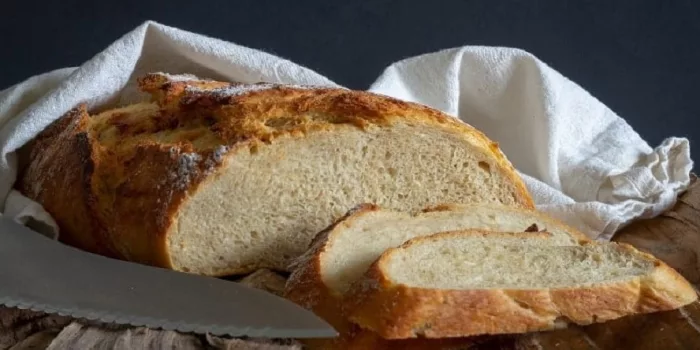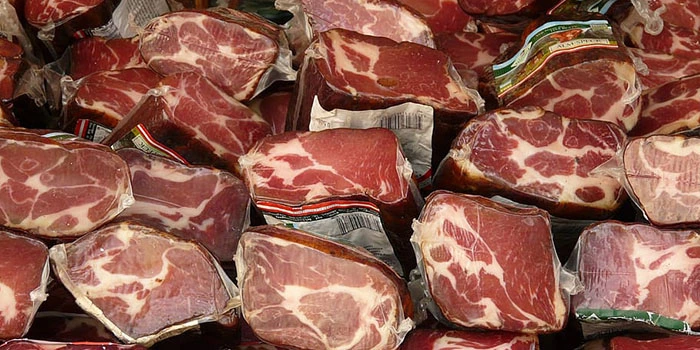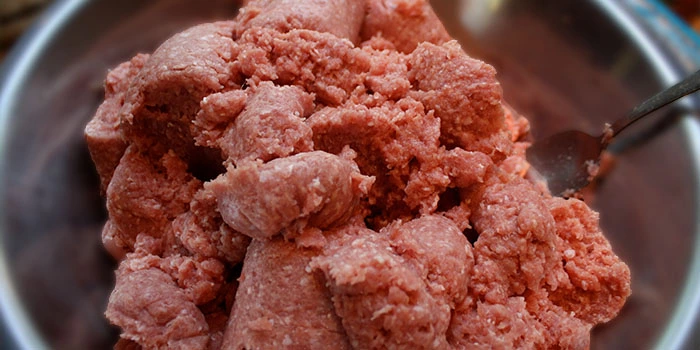A huge problem that bakery lovers face is the loss of their own bread fresh condition too quickly.
Bread tends to spoil over time, sometimes it just starts to be very dry and not very appetizing, but sometimes your bread may show signs of mold.
This situation becomes especially unpleasant when you seem to have recently bought bread and it suddenly became moldy and you don’t know what exactly led to this.
In this article, we’ll look at how to tell if your bread is moldy, what are the ways to prevent mold, such as bread boxes, and what happens if you want to try bread that is moldy.

How to identify moldy bread?
The most important thing to learn how to keep bread from molding is to be able to identify the appearance of mold in the early stages, because if you suddenly take a piece of bread without looking at its appearance and try it, you may not even feel the taste of mold, but then the mold may show itself for example, causing symptoms of poisoning.
Looking at the whole loaf you don’t understand there is mold, you need to specifically consider each piece of bread for the existence and development of spores on them. On different types of bread, mold traces look different, somewhere they are just white, somewhere they are green, or even blue spots.
Another good way to tell if there is a problem with your bread is the smell.
Smell a piece of your bread and if it smells unusual and unpleasant, like vinegar or just a musty smell, then something is wrong with the bread.
Sourdough bread in good condition can also have an unpleasant smell, but if your bread is ordinary, then an unpleasant smell should not come from it. If the characteristics above are confirmed and you understand that your bread is moldy, then immediately throw it away with the packaging or wash the dishes on which it lay.

Tips to prevent moldy bread
Finally, we come to the main question of this article, namely what are the ways to keep bread from molding?
Below is a list of tips on storing bread that will help you keep the entire loaf fresh as long as possible.
Freeze bread from bread box
The first thing that can help keep bread from molding is the usage of the freezer, this method works especially well for sliced bread because the freezer burn all the mold and frozen bread can be fresh much longer.
All you have to do is take a thick freezer bag or plastic bag and put the bread slices in it, then place the plastic bag in the freezer.

What are the bread boxes?
Bread boxes are special boxes that can be used both for decoration and for the safe storage of bread.
Bread boxes come in a variety of sizes and materials, so you can choose a bread box that fits well with your kitchen decor while still preventing mold.
Also, the bread box helps to reduce the number of crumbs on the countertops from the entire loaf.

Kitchen cabinet and drawer
Also, a good way to keep the bread from molding is to store the bread in a kitchen cabinet or drawer.
It is best to make sure that there is no moisture or dirt in the cabinet and drawer.
Also use a plastic or paper bag to ensure that the entire loaf lies there, and not just inside the drawer or cabinet.
An important point is the location of the cabinet or drawer, they should not be located close to devices that tend to heat up or where there is a high percentage of moisture, as you will not be able to constantly monitor the temperature.
Cloth bread bag and brown paper bag
A good alternative to a bread box is a cloth bread bag and paper bag to keep bread from molding.
In particular, cloth bread bags, such as clean tea towel, do a good job, as they help to completely protect the bread from the spread of excess moisture.
Bags for bread are generally a very compact tool, especially if you want to be able to carry bread with you on trains for example.
However, it is very important to keep an eye on the condition of the bread bags and always pay attention to their cleanliness and moisture.

Avoid plastic and fridge
Another important tip to help you keep bread from molding is to avoid using plastic bags, except in the freezer.
A plastic bag promotes the spread of moisture and dirt, which means that by using a plastic bag you are helping mold grow on your bread.
Plastic wrap is also included in this category.
It is better to use cloth bags or paper bags so that firstly, for instance, clean tea towel, it is environmentally correct to keep your bread in good condition, and secondly, they are more effective than plastic ones.
It is also better to store bread in a bread box without plastic packaging if you want to prevent bread molds.
Type of bread, whole loaf or pre-sliced
A very good tip for keeping the bread from molding is to understand what type of bread you have.
Some types of bread need special storage in terms of temperature and humidity levels, check your type of bread beforehand.
It is also best to buy a whole loaf that has not been cut in advance, as then it will be stored longer.
Sliced bread slices develop mold spores faster, and whole bread can also be handy when thinly sliced.

Slice bread and “revive” stale bread
Another important thing that will help you keep bread from molding is to use sliced bread from the middle.
Very often, this method helps to keep the bread fresh for as long as possible and to identify problems inside it just as immediately.
It is also very important to immediately detect if you have stale bread because if you do not notice this in time, the problem can develop and develop into mold spots on the own bread.
If you spot stale bread, you can simply put the bread in a warm oven and you’ll end up with an almost fresh piece.
Toast bread
One of the most enjoyable ways to keep bread from molding is to eat it before it gets moldy.
As soon as the bread becomes stale, you can immediately use it for sandwiches or reheat toast bread in the oven with cheese.
It’s best to not leave food out for too long.
This is especially true for bakery products, as over time they lose their attractive appearance and taste.
How to store bread: store-bought and homemade bread?
How and how much you should store bread depends primarily on the type of bread you have. There are three types: organic, commercially store-bought bread, and, home-baked bread.
In the case of regular organic bread, you don’t have to worry too much, it can be safely kept on the counter, but only for one or two days.
Organic bread is best bought in quantities that you are sure you can consume within two days.
Store-bought bread is designed to last a long time on the store shelves, which is why at home it also has different keeping characteristics, which are still longer than other types of bread. If you want to keep bread from the store at room temperature, then it is guaranteed to be fresh for 5 days, if in the freezer, it can take up to several months purely.
Freshly-baked bread or home-baked bread as well as organic bread is better not to leave for a long time and eat within a couple of days if you want to enjoy the freshness of the bread as long as possible.
For example, if you store homebaked bread in a pantry, then the bread is guaranteed to be fresh for about 3 days, and if in the refrigerator, this number increases to 5 days.

What will happen if you will try to eat bread with mold?
To begin with, the first thing you will feel after tasting such spoiled bread is an unpleasant smell and a rather sharp taste, this will immediately help you understand that something is wrong with your bread.
If you are an allergic person, then mold in bread can immediately show up in you as an allergic reaction, which can lead to serious health problems. Also, some types of mold on bread can release poisons that are very dangerous for people who do not have any health problems.
Toxins from mold can manifest as poisoning, making you feel dizzy, nauseous, and have diarrhoea.
As soon as at least one of the symptoms appears, you need to urgently contact a specialist, otherwise, it can lead to serious health problems.
Can you just cut the mold?
Better not risk your health and try to always monitor the condition of the bread to be sure that your health will not be exposed to any kind of risk, especially since some mold poisons can lead to big problems with the gastrointestinal tract.
A simple solution that many people have used to get rid of mold has been to cut off the part with spores if there is only one section of the bread, rather than the whole loaf.
However, is this a good method for cleaning bread? No, spores are not just dirt, mold can travel through the air, meaning you won’t even know if there are mold spores on your bread or not, as they will be very small.
It is best, despite the unpleasantness of the process, to simply throw out moldy bread so as not to endanger yourself and the place where the bread was stored.

FAQ
Does keeping bread in the fridge prevent mold?
There is no ordinary refrigerator since there is a high percentage of moisture and it turns out that nothing prevents mold from multiplying.
However, if you use a freezer or refrigerator, this can help keep your bread fresh for as long as possible.
How do you keep bread from Moulding?
There are a huge number of different ways, but the most important ones have to do with how you store bread, because no matter what kind of bread you buy if it is kept in the wrong place for too long, it will also become unfit for eating.
The best advice on how to keep your bread free of mold is to use special bread boxes and bags.
What is the best way to keep bread fresh?
The best way is to store them in bear boxes, which are located where there is no heat or moisture.
However, it is also important to keep track of time and eat the bread before it becomes inedible.
Why did my bread get moldy so fast?
This can be due to two factors: storage space and moisture.
If you store bread in a place with a high temperature, it will begin to dry out very quickly and will no longer be fresh, but if there is also a high level of moisture in this place, then the bread will spoil many times faster.
Can some types of bread become moldier quicker?
Some types of bread can become moldier than others due to how they are prepared and how they are stored. Of course, it all depends on how exactly you keep the bread, but the type of bread can still affect the appearance of mold.
Organic pieces of bread, like sourdough bread or french bread, are among the most prone to mold. Due to the nature of its preparation, organic bread is designed to be eaten at least two days after preparation.
Homemade bread can just as quickly begin to develop mold on the whole loaf if left for more than 7 days. The homebaked fresh loaf should be left for 5 to 7 days in special baked goods boxes.
Bread from the store, like wrapping bread, is one of the most resistant to mold development, as it is made specifically to be stored on the shelves, however, improper storage can lead to rapid mold development. Such bread can be stored for two to three months.
Conclusion
Bakery products are not only ideal meals in themselves but also a large number of dishes, such as soups or bruschettas, cannot do without them.
The main thing in making bread tasty is that it remains fresh bread since it is fresh bread that is not only the most delicious but also the most harmless to health.
We hope that after reading this article you will no longer have questions about how to properly prevent spores of mold on bread.





